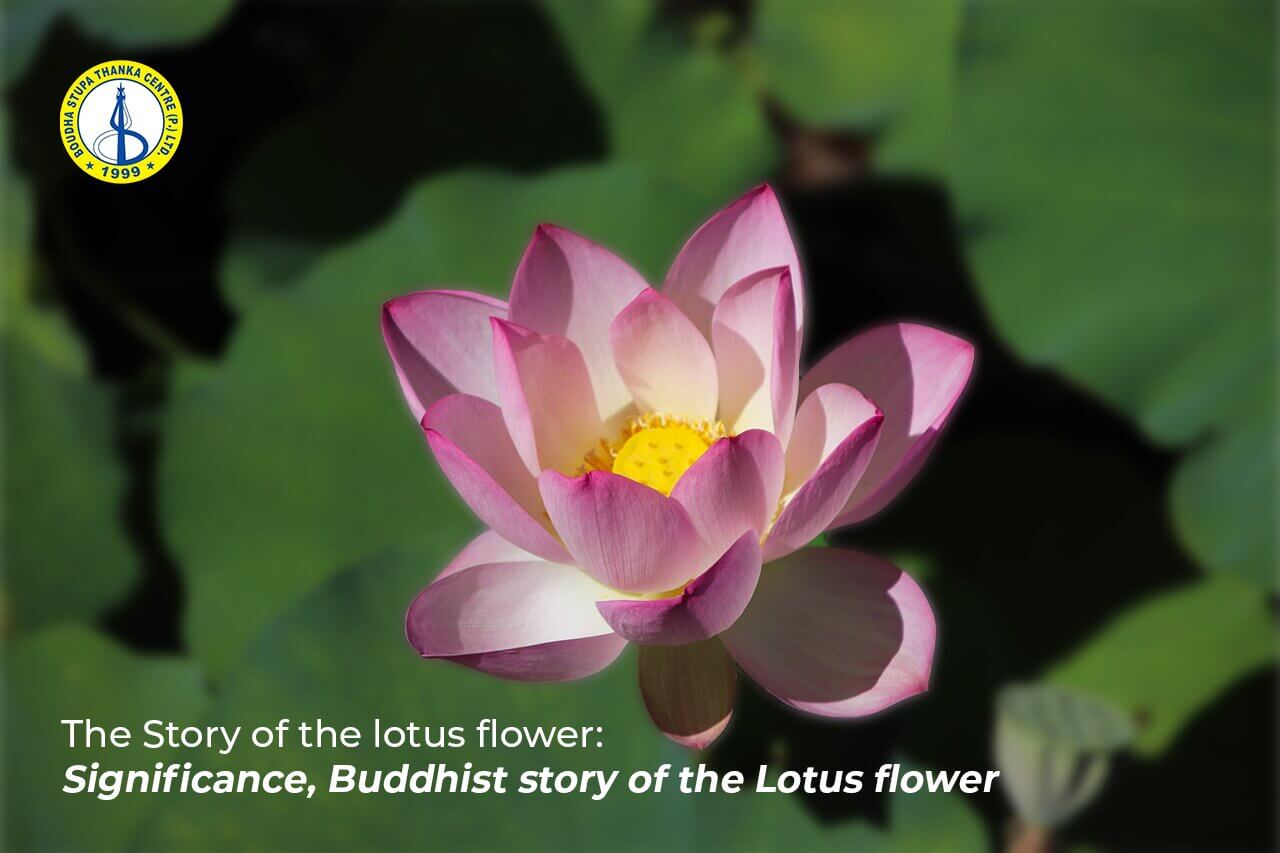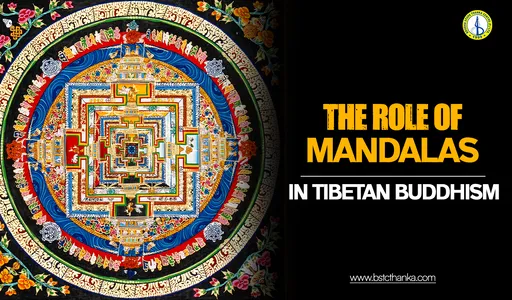
The Story of Lotus Flower and The 4 Types of Lotus in Buddhism
The Story of Lotus Flower: Significance and Hidden Buddhist Story
Lotus is a hydrophyte, symbolizing purity, and holds immense significance in Buddhist traditions. The fact that it thrives in nutrient-rich muddy conditions makes it ideal to represent life. Here, the mud is regarded as the suffering of several kinds one goes through during their lifetime and the untouched Lotus flower denotes the purity of mind, body, and speech despite the hardships.
According to Buddhism, the Lotus flower represents spirituality and non-attachment. In Buddhist traditions, the Lotus flower is taken as a symbol of inspiration. As it rises above hardships and flourishes; It inspires us to rise beyond our material desires and sufferings to attain bliss and Nirvana.
Story of the Lotus Flower in Buddhism: The Ancient Tales
The evidence of the pristine lotus flower dates back to the ice age when most of the plants could not survive the atmosphere and got extinct. However, the Lotus flower survived and became part of the ecosystem in most parts of the world from then and there the Lotus flower is renowned for playing a significant part in several ancient cultures.
Lotus flowers have been highlighted in ancient hieroglyphics, Chinese ceramics as well as Hindu mythologies where the goddess Laxmi emerged from the Lotus flower.
The story of the lotus flower comes from the lotus sutra, one of the most significant and esteemed literature in Buddhist legends. The Lotus Sutra is known as Saddharmaouark-stra in Sanskrit. It holds a special place as one of the earliest writings of Mahayana Buddhism and is cherished for its profound truth and essence.
According to Buddhist legends; While Queen Maya Devi was carrying Lord Buddha in her womb, she had a dream about a white Elephant carrying a white Lotus in its trunk. Later after the birth of Buddha, everywhere the baby Buddha stepped, a lotus flower flourished. Hence, the lotus flower is one of the eight most propitious symbols in Buddhism.
Also, the story of the lotus according to ancient mythology, the second Buddha; Padmasambhava was an eight years old baby who emerged out of a Lotus flower. He was referred to as the lotus born and was named after the Lotus flower. He is renowned as the second Buddha in Tibet as he introduced Buddhism in this region. He accomplished this by conquering and converting the local deities.
We can also find several sculptures of Tara featuring the Lotus flower. She is often seen gripping two Lotus blossoms from the stalk blooming adjacent to her head. Among them, one of the Lotus is fully open while the other has just begun to blossom which are beautifully illustrated in tibetan Tara thangka art.
Lotus Flower Meaning in Buddhism
What is the Meaning of the Lotus in Buddhism?
There are several meanings of the Lotus flower in Buddhism. Amongst all, let’s discuss the most profound meaning of the Lotus flower in Buddhism.
The English meaning of the famous Tibetan mantra "Om Mane Padme Hum" is “praise to the jewel in the Lotus”.
It is a call to Chenrezig (Avalokiteshvara), the Bodhisattva of compassion. In this context, the lotus symbolizes wisdom, and the jewel represents skillful means. It is a powerful invocation of compassion and wisdom in Buddhism.
There are several meanings of the Lotus flower in Buddhism. In the renowned Buddhist scripture, Anguttara Nikaya, Buddha analogies himself to the lotus flower rising beyond the impurities of the world to attain Nirvana.
The pure nature of an infant is always pure like a Lotus flower. An infant is always filled with love, compassion, wisdom, and power. However, their consciousness gets deluded by the impure surroundings like a Lotus flower surrounded by contaminated water.
It takes a lot of effort, the practice of good karma, and years of meditation to purify body, speech, and mind to return back to the natural state of purity, like a Lotus flower growing out of the murky water with a lot of resilience.
Finally, after all these efforts a soul attains a pure state of consciousness. This state resonates with a fully blossomed Lotus flower; unaffected by the impure surroundings and evolving in spite of all the hardships.
According to the text of Mahayana Buddhism, it is deliberated that each stage of a lotus blossom denotes stages of enlightenment. The partial opening of the buds while the center still remains hidden suggests the possibility of enlightenment. And when the lotus buds have blossomed it implies that the person is fully enlightened.
4 Types Of Lotus in Buddhism and Its Holy Significance
The 4 types of lotus in Buddhism are white lotus, pink lotus, red lotus, and blue lotus, each symbolizing different aspects of spiritual purity and enlightenment in Buddhism. Besides these four types of lotus, there are two other types adhered to in Buddhism: the golden lotus and the purple lotus. Each lotus flower in buddhism signifies a different meaning. So, what does the different lotus flower represent in buddhism? Let’s explore:
- Red Lotus Flower: The red lotus flower is a symbol of love, care, and affection. It symbolizes the feelings of compassion and the ability to feel other people’s pain and suffering. It conveys the purity of the soul and a clean compassionate heart. The red lotus of the heart sutra represents the history and stories of lord Buddha.
- White Lotus Flower: As the name suggests, the white lotus is symbolic of peace, the purity of the body, mind, and soul. It also represents the clean and pure heart of lord Buddha. It emerges from the muddiest water and is illustrated as the goal at the end of one’s spiritual journey. Some also say that the white lotus is representative of a state of mind that is purified of any negativity.
- Pink Lotus Flower: The pink lotus flower is known as the most honored and supreme Lotus flower. The pink Lotus while in its full blossom and unsullied by the mud symbolizes the lord Buddha himself. It represents the successive Buddhas and their history.
- Blue Lotus Flower: The Blue Lotus commonly known as Utpala is representative of wisdom, knowledge, and intelligence. The Blue Lotus flower is often shown partially opened. This indicates someone who has begun their journey towards spirituality by leaving the concept of self behind. It denotes the soul’s victory over knowledge as well as wisdom.
- Purple Lotus Flower: The Purple Lotus flower is a rare kind and they represent several mystical and spiritual journeys.
- Gold Lotus Flower: A Gold Lotus Flower symbolizes all Buddha’s enlightenment.
How Else Is The Lotus Flower Used As A Symbol In Buddhism?
The Lotus flower has immense significance in yoga and meditation as well. Yoga and meditation pose includes the Lotus position which is performed by folding one leg over the other in such a way that the right foot rests against the left thigh and the left foot rests against the right thigh. This is one of the most common meditation poses in Buddhism.
The Lotus blossoms profoundly in each aspect of Buddhist arts and literature. This sacred flower serves as a pedestal for divine embodiments in Buddhist arts.
Even today, the individual practicing Buddhist meditation uses images of Lotus as a means to purify the body, speech, and mind.
There is a belief in Buddhism that the lotus flower denotes good luck. If an individual wears jewelry with spiritual nature including depictions, shapes, or forms of a lotus flower, it yields great luck. So the versatile Lotus flower is used in the form of ornaments as well.
In thangka, the lotus is represented with vibrant, intricate details, symbolizing purity, enlightenment, and spiritual awakening. Each petal of the illustration in lotus mandala thangka represents different virtues, and the lotus are shown supporting deities or Buddhas, emphasizing their transcendence and connection to the divine.
Wrap-Up
The history of the Lotus flower holds immense significance in Buddhist traditions which symbolize purity and spiritual awakening. Its distinct ability to thrive even in the murky water serves as a powerful metaphor for the journey of life and the journey to attain nirvana.
It is also regarded as the embodiment of the divine Lord Buddha himself. As we contemplate the story of the Lotus flower, we are reminded of our potential to rise beyond any suffering and attain nirvana. The symbol of the Lotus is incorporated in several aspects of Buddhist practices that include meditation postures and also acts as a central theme in Buddhist arts and traditions.
FAQs
What is the moral of the lotus flower?
The moral of the lotus flower in Buddhism is that purity and spiritual enlightenment can emerge from the murkiest of circumstances. Just as the lotus grows untainted from muddy waters, individuals can rise above suffering and ignorance to achieve enlightenment and inner peace.
What is the connection between Buddha and lotus?
The connection between Buddha and the lotus is deeply symbolic in Buddhism. The lotus flower represents spiritual symbolism; the purity, enlightenment, and rebirth, mirroring Buddha's journey to enlightenment. Often, Buddha is depicted sitting or standing on a lotus flower, symbolizing his divine nature and enlightened state.








